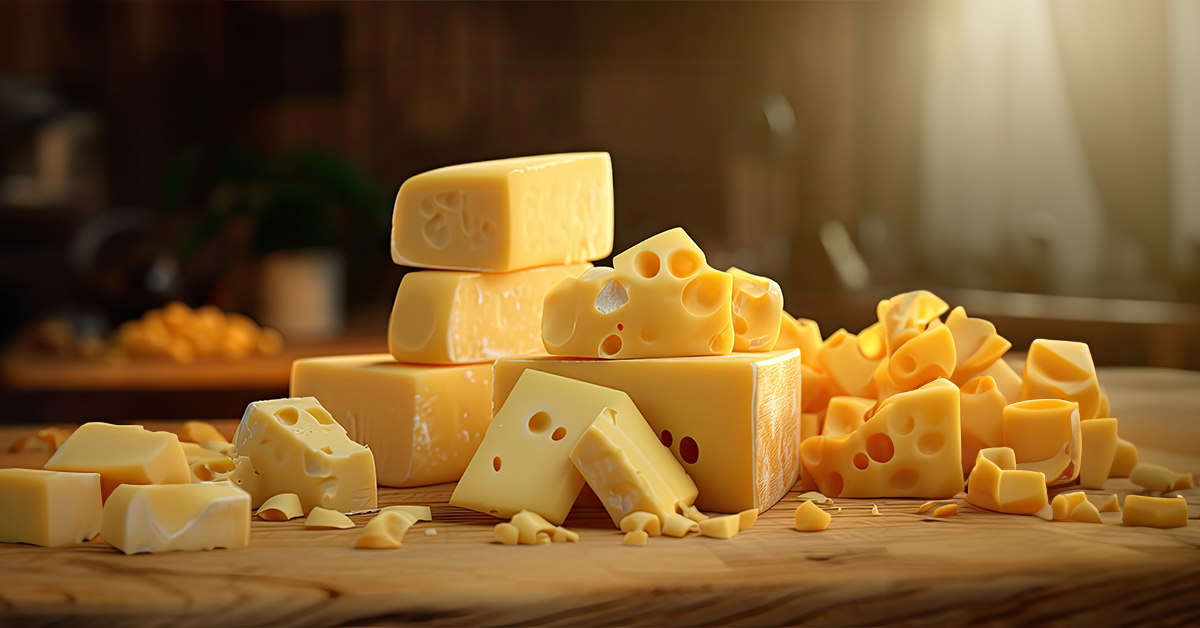
We all love how cheese makes our favorite foods taste better, whether it’s on pizza, in a sandwich, or mixed into pasta. But cheese isn’t something that was always part of Indian diets, so many of us aren’t sure how it affects our health, especially when it comes to losing weight.
If you’re trying to reduce weight and enjoy eating cheese, you might be asking yourself if it’s okay to keep it in your diet. Let’s take a closer look.
What is the Nutritional Value of Cheese?
Cheese is a rich source of calcium, protein, and fats. These nutrients are vital for overall health, especially for bone strength and muscle maintenance. However, cheese can also be high in calories and saturated fats, which is need to be considered carefully.

Can Cheese Actually Be Part of a Weight Loss Diet?
Cheese can be part of a weight loss diet, but it requires mindful eating. Cheese is rich in protein and calcium, which are beneficial, but it’s also calorie-dense and high in saturated fat.
The key to including cheese in your diet without hindering weight loss is to consume it in moderation and be mindful of portion sizes.
Is Cheese Good for Weight Loss?
In general, cheese is not the best food choice when you are aiming for weight loss. Although it offers nutritional benefits like protein and calcium, the high calorie and fat content make it easy to overconsume.
Even small portions of cheese can be calorie-dense, which can slow down your progress if you’re trying to create a calorie deficit. To top this, cheese is often consumed with high-calorie foods like bread and pasta, making it harder to stick to a weight loss plan.
What Are the Best Cheeses for Weight Loss?
In India, finding a wide variety of cheese in local markets can be challenging. Most of us are familiar with just a few common brands available in grocery stores and supermarkets.
Cheeses like mozzarella, feta, and brie are not always easy to find, and many people may not even know about them. However, regardless of the type of cheese, it’s important to be mindful of portion sizes.
If you’re trying to lose weight, it’s best to enjoy cheese in portions as small as possible. This way, you can still savor the rich taste of cheese without consuming too many calories.
How Cheese Can Aid Weight Loss?
Cheese can support weight loss if you eat it in the right way. It’s a good source of protein, which helps your muscles, especially if you’re exercising. Also, cheese doesn’t raise your blood sugar much, so it can help keep your energy levels steady throughout the day.
However, these benefits only come into play when cheese is eaten in moderation and balanced with other nutrient-rich foods.
What are the Potential Downsides of Cheese?
Despite its benefits, cheese has several downsides when it comes to weight loss:
- High in Saturated Fat: This can contribute to weight gain and may slow down your metabolism, making it harder to lose weight.
- Calorie-Dense: A small amount of cheese can pack a lot of calories, which can lead to overeating and hinder weight loss progress.
- High Sodium Content: Many cheeses are high in salt, which can cause water retention, leading to bloating and making it difficult to gauge actual weight loss.
- Portion Control Challenges: Cheese is often easy to overeat, particularly when it’s added to comfort foods like pasta, sandwiches etc, making it challenging to control calorie intake.
Tips on Portion Control and Pairing Cheese with Other Healthy Foods
If you decide to include cheese in your weight loss plan, here are some tips to do it wisely:
1. Control Portions
In our local grocery stores, cheese is typically available in slices (20 grams), cubes (25 grams), or blocks (250 to 500 grams). Stick to a small cube (25 grams, approximately 2 tablespoons) to keep your calorie intake in check. A little bit of cheese can add a lot of flavor without piling on too many calories.
2. Pair with High-Fiber Foods
Combine cheese with fiber-rich foods like whole grains or vegetables. This can help you feel fuller for longer and balance out the overall calorie content of your meal.
3. Choose Lower-Fat Varieties
If available, opt for cheeses that are lower in fat, like mozzarella or cottage cheese (chenna paneer or low-fat paneer). These options are lower in calories but still provide important nutrients.
4. Use as a Flavor Enhancer
Instead of making cheese the main component of your meal, use it sparingly to enhance the flavor of your dishes. A small sprinkle on a salad or over-roasted vegetables can go a long way.
How We At Fitterfly Can Help You?
Many of our Fitterfly Weight Loss Program members love cheese, whether it’s melted on pizza, sprinkled over pasta, spread on chapati, or stuffed in a sandwich.
Our Nutrition Coaches advise them that they can always continue enjoying cheese while being mindful of portion sizes and choosing lower-fat options like cottage cheese or paneer, which are easily available in a nearby dairy shop or can be made at home.
This balance is where Fitterfly can help. Our weight loss programs are designed to let you enjoy your favorite foods while still achieving your goals.
We provide personalized diet plans that include a variety of nutritious foods and exercise routines that fit your lifestyle, along with guidance on maintaining your mental well-being.
Take the first step by giving us a missed call at 08068507599, and one of our program advisors will reach out to you!
This blog provides general information for educational and informational purposes only and shouldn't be seen as professional advice.











